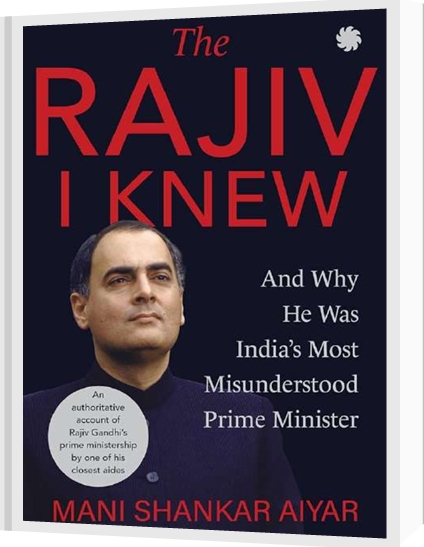What is Governance, and why should it be measured? Governance refers to the processes, institutions, and traditions that govern how power is wielded, citizens are given a voice, and decisions are made on issues of public interest. In practice, governance refers to how successfully governments keep their promise – enforcing law and order, providing public goods, managing public finances, and protecting individuals’ rights.
Improving governance is critical because it directly impacts quality of life, economic progress, and social fairness. Weak governance emerges as corruption, inefficiency, and unfairness, weakening trust and impeding development. In India’s federal system, where states are responsible for most public services, governance gaps can be the difference between success and stagnation. To improve, we must first measure governance. Measurement converts the abstract idea of governance into concrete, comparable statistics. It facilitates benchmarking, promotes healthy competition among states, and empowers policymakers and citizens to demand better results.
The Mundle Paper: A Data-Driven Approach to State Governance
Sudipto Mundle and colleagues (NIPFP, 2016) developed a fact-based approach for evaluating governance in Indian states. Their strategy emphasizes service delivery outcomes, which are tangible results that citizens care about.
The Mundle framework assesses five main dimensions:
- Infrastructure Services (Roads, Power, and Water)
- Social Services (Education and Health)
- Fiscal Performance (Tax Collection and Spending Efficiency)
- Justice, Law, and Order (Court Efficiency and Police Strength)
- Legislative Quality (Assembly Productivity)
Key insights:
- Ranking Consistency: States like Tamil Nadu and Kerala routinely top the standings, while Bihar and Uttar Pradesh fall behind.
- Development-adjusted Performance: Some impoverished states (such as Chhattisgarh and Odisha outperform their wealthier counterparts, displaying efficient use of limited resources.
- Objectivity: The framework is based on official statistics, minimizing subjectivity and bias.
World Bank’s Worldwide Governance Indicators (WGI): A Global Benchmark
The World Bank’s WGI is the most extensively used global governance evaluation, covering more than 200 nations and six categories.
- Voice and Accountability
- Political Stability
- Government Effectiveness
- Regulatory Quality
- Rule of Law
- Control of Corruption
The WGI is mostly based on expert surveys and perception data, which makes it beneficial for cross-country comparisons but potentially less exact for subnational analyses. For India, the WGI identifies regulatory strengths but ongoing issues in government performance and corruption control.
The CARE Edge State Ranking Report 2025: A 360-degree Assessment
The 2025 CARE Edge State Ranking Report provides one of the most comprehensive, up-to-date assessments of Indian States, using a multi-pillar approach to capture the complexity of governance and development.
Key Features: The report rates states based on seven pillars: economic, fiscal, infrastructure, financial development, social, governance, and the environment. As can be noted Governance is only one of the seven pillars, although, taken together the seven pillars also give a composite view of how well the state is governed. Methodology has been revised for the 2025 edition, which included a better normalization time and extra indicators for greater comparability and depth. The assessment is objective and holistic, balancing development potential, inclusiveness, and investment attractiveness.
Pillar Highlights:The 2025 CARE Edge State Ranking Report paints a dynamic picture of India’s state-level development, with Maharashtra leading the pack among large states, closely followed by Gujarat and Karnataka. In the category of North-East, hilly, and small states, Goa claims the top spot, with Uttarakhand and Sikkim rounding out the top three. Economically, Gujarat, Karnataka, and Maharashtra, stand out as the dominant performers among major states, leveraging robust industrial growth and investment inflows.
On the fiscal front, Odisha, Gujarat, and Maharashtra demonstrate the strongest management of public finances, while Punjab, Haryana, and Telangana set benchmarks in infrastructure development. When it comes to social indicators such as education and health, Kerala, Tamil Nadu, and Maharashtra set the standard for others to follow. Governance quality is highest in Andhra Pradesh, Madhya Pradesh, and Tamil Nadu, reflecting efficient administration and legislative productivity.
In the environmental pillar, Karnataka, Telangana, and Andhra Pradesh distinguish themselves through progressive sustainability initiatives and effective resource management. This comprehensive assessment underscores the diverse strengths of India’s states and highlights the importance of balances, multi-dimensional progress for sustained growth and investment appeal.
Notable Trends:The analysis demonstrates that nations can flourish in certain areas while falling behind in others, emphasizing the significance of a balanced approach. The rankings are not directly comparable to prior editions due to methodological modifications, but they establish a new benchmark for future assessments.
Depicted below are state level rankings on the composite index and specifically for the governance component.


What Should Be Done After Ratings Are Published?
- Promote competitive federalism: Transparent rankings encourage governments to learn from their peers and implement best practices, resulting in a race to the top.
- Targeted Policy Interventions: Low-performing states can use granular data to identify and prioritize improvements in certain industries.
- Informed Resource Allocation: Central and state governments can relate financing and incentives to governance outcomes, resulting in effective resource allocation.
- Empower Citizens: Public ratings enable voters and journalists to hold governments accountable, enhancing democracy.
- Continuous Improvement: Regular, transparent monitoring generates a feedback loop, leading to sustainable improvements and policy innovations.
Conclusion
Measuring governance is more than simply an academic exercise; it drives change. The Mundle framework, the World Bank WGI, and the CARE Edge study all provide valuable viewpoints. By using these ratings, India may promote competitive federalism, target reforms, and empower citizens, driving the transition to a more effective, inclusive, and accountable governance structure.
References
- Mundle, S. et al. (2016). Governance Performance of Indian States. NIPFP Working Paper
- World Bank Worldwide Governance Indicators
- CARE Edge State Ranking Report 2025
- Diagrams are taken from https://www.careratings.com/uploads/newsfiles/1745915161_CareEdge%20State%20Ranking%20Report%202025.pdf







